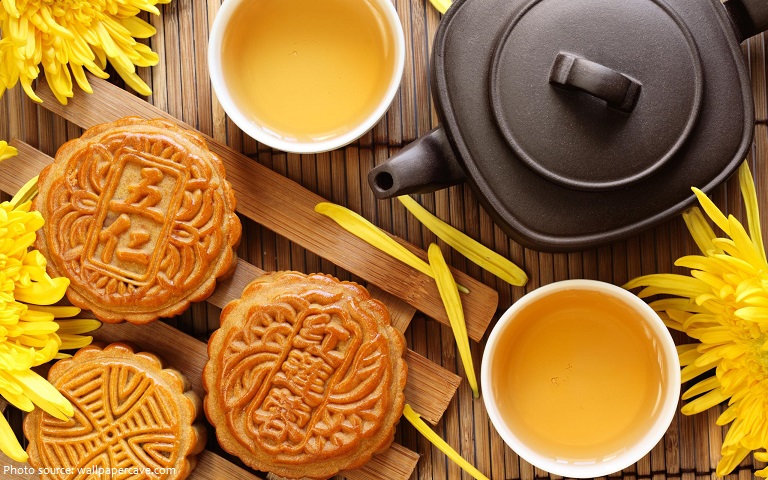
A mooncake is a Chinese bakery product traditionally eaten during the Mid-Autumn Festival.
On the festival mooncakes are regarded as a delicacy. They are offered between friends or on family gatherings while celebrating the festival.
The Mid-Autumn Festival is the second-most important holiday after Chinese New Year with a history dating back over 3,000 years, when the Emperor of China worshipped the moon for bountiful harvests. It is held on the 15th day of the 8th month of the Chinese lunisolar calendar with a full moon at night, corresponding to mid-September to early October of the Gregorian calendar. On this day, the Chinese believe that the moon is at its brightest and fullest size, coinciding with harvest time in the middle of Autumn.
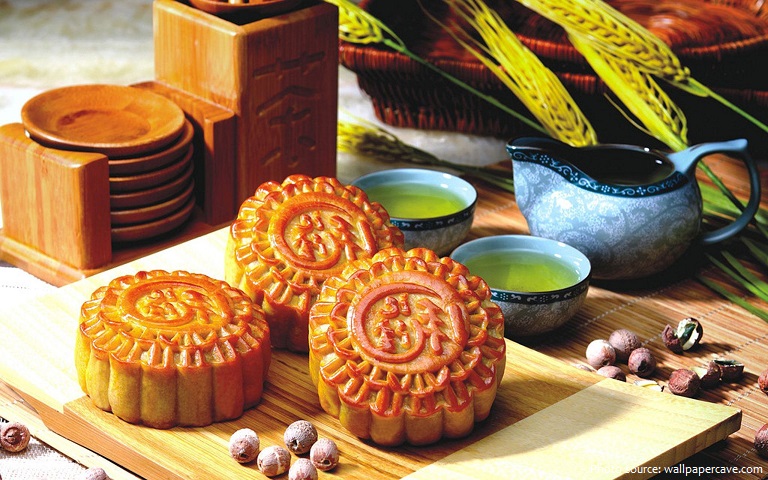
Because of its central role in the Mid-Autumn festival, mooncakes remained popular even in recent years. For many, they form a central part of the Mid-Autumn festival experience such that it is now commonly known as ‘Mooncake Festival’.
Typical mooncakes are round pastries, measuring about 10 cm (4 in) in diameter and 3–4 cm (1.2–1.6 in) thick, and are commonly eaten in the Southern and Northern Chinese regions.
A rich thick filling usually made from red bean paste or lotus seed paste is surrounded by a thin, 2–3 mm (approximately 1/8th of an inch) crust and may contain yolks from salted duck eggs.
Mooncakes are usually eaten in small wedges accompanied by tea.
Traditional mooncakes have an imprint on top consisting of the Chinese characters for “longevity” or “harmony”, as well as the name of the bakery and the filling inside. Imprints of the Moon, Lady Chang’e on the Moon, flowers, vines, or a rabbit (symbol of the Moon) may surround the characters for additional decoration.
In Chinese culture, roundness symbolizes completeness and togetherness. A full moon symbolizes prosperity and reunion for the whole family. Round mooncakes complement the harvest moon in the night sky at the Mid-Autumn Festival.
The mooncake is not just a food. It’s a profound cultural tradition deep in Chinese people’s hearts, symbolizing a spiritual feeling. At Mid-Autumn Festival people eat mooncakes together with family, or present mooncakes to relatives or friends, to express love and best wishes.
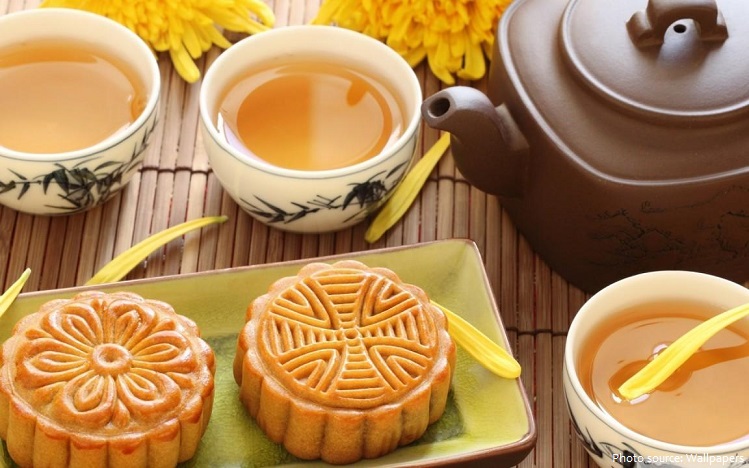
The earliest mention of these traditional pastries, known as yue bing in Chinese, dates to the Song Dynasty (960–1279). Mooncakes were notably mentioned in the Southern Song Dynasty Chronicle by Wu Zhimu.
During the reign of Tang Dynasty Emperor Xizong (873–888), mooncakes were also gifted by the court to visiting scholars during the Mid-Autumn Festival. This practice likely inspired the pastry’s association with the festival.
But while the association may date to the Tang Dynasty, the widespread practice of making and eating mooncakes during the Mid-Autumn Festival only began during the Ming Dynasty (1368–1644). With several centuries between the Tang and Ming dynasties, one can theorize that the pastry started as an aristocratic pleasure before being embraced by the masses.
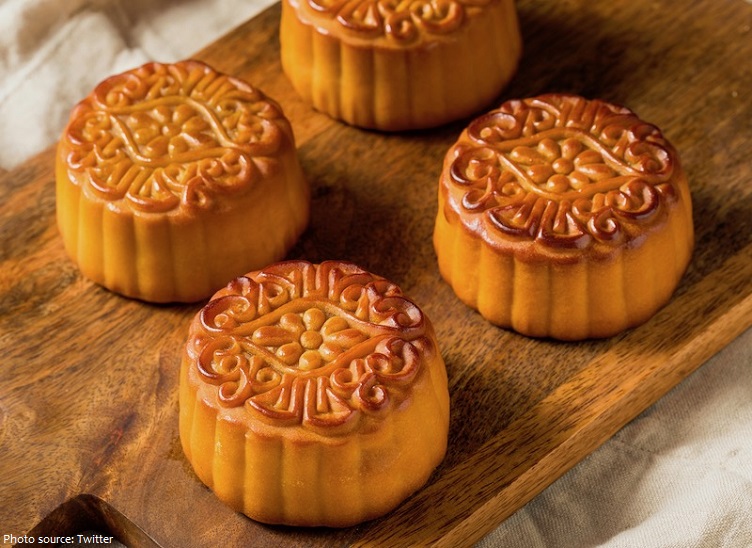
In the late 1950s and ’60s, mooncakes “became known as a gifting item,” said Max Wong, the executive director of Kee Wah Bakery, a Hong Kong institution that has been around since 1938 and now manufactures over 10 million mooncakes a year.
Today, it is customary for businessmen and families to present them to their clients or relatives as presents, helping to fuel a demand for high-end mooncakes.
In the West, mooncakes can be purchased in Chinatowns.
Mooncakes in Japan are known as geppei, a transliteration of the Chinese name, even though the latter character does not normally refer to a “cake” in Japanese but to a paste made from glutinous rice. They are associated with Chinese culture and are sold all year round, mainly in Japan’s Chinatowns.
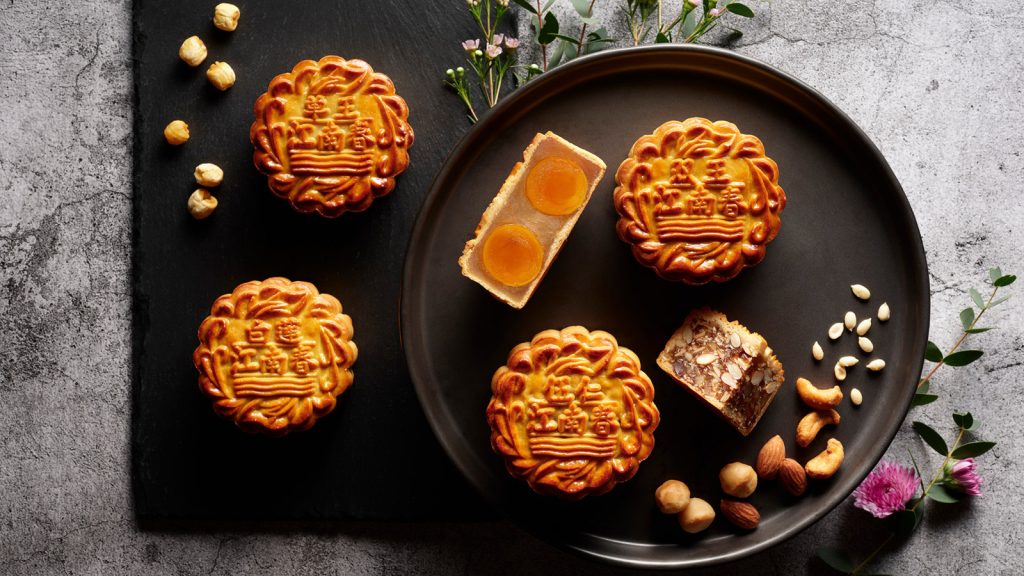
In China the price range of mooncakes is very wide. The price depends on the flavor and packaging. In general the price for a red bean paste, lotus seed paste, or vegetable and fruit mooncake is 5–10 yuan. Five kernel and roast pork flavor is more expensive, about 10–20 yuan each. Gift boxes are often priced from 100 to 200 yuan (with 5 to 9 mooncakes inside), with the price depending more on the packaging than the mooncakes.
The largest mooncake weighs 2,496.4 kg (5,502.74 lb) and was prepared by the culinary team at the Parkside Plaza at Changfeng and Shanghai Marriott Hotel Changfeng (both China), in Shanghai, China, on 19 September 2013.
The most mooncakes sold on a single online platform in 24 hours is 11,075,071 mooncakes and was achieved by Tmall (China), on 13 September 2018. Tmall attempted this record is to celebrate Mid Autumn Day festival, which in 2018 took place on 24 September.
